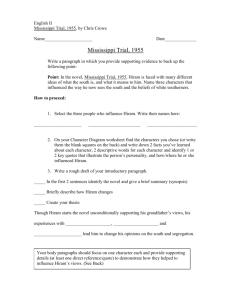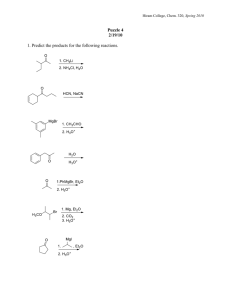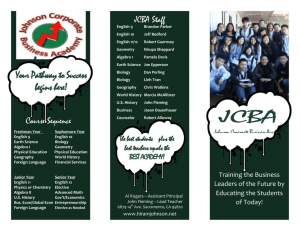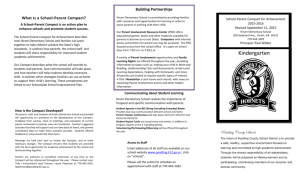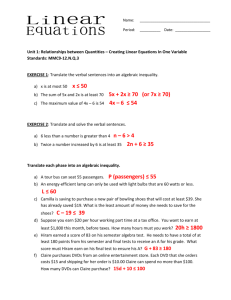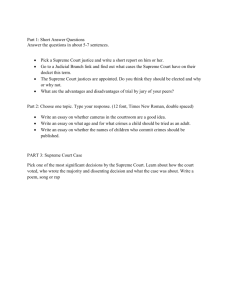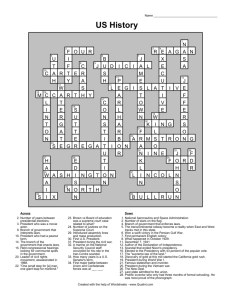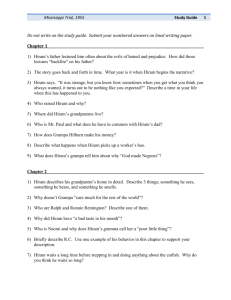Worksheet for the two Supreme Court cases concerning the Hiram [a
advertisement
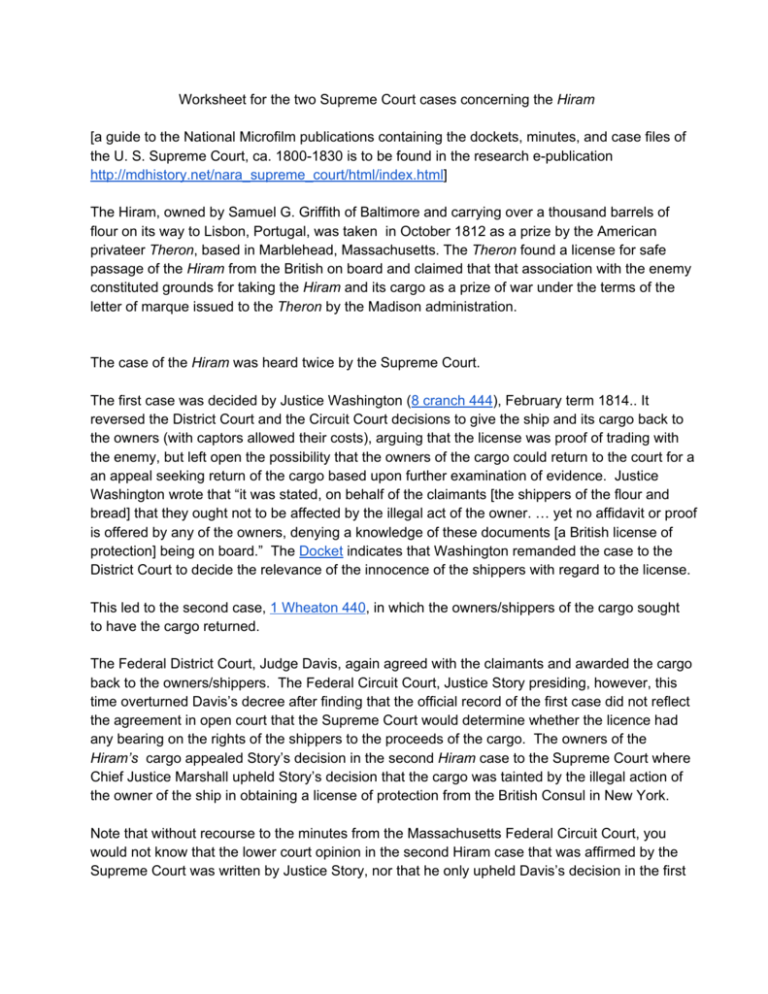
Worksheet for the two Supreme Court cases concerning the Hiram [a guide to the National Microfilm publications containing the dockets, minutes, and case files of the U. S. Supreme Court, ca. 1800­1830 is to be found in the research e­publication http://mdhistory.net/nara_supreme_court/html/index.html] The Hiram, owned by Samuel G. Griffith of Baltimore and carrying over a thousand barrels of flour on its way to Lisbon, Portugal, was taken in October 1812 as a prize by the American privateer Theron, based in Marblehead, Massachusetts. The Theron found a license for safe passage of the Hiram from the British on board and claimed that that association with the enemy constituted grounds for taking the Hiram and its cargo as a prize of war under the terms of the letter of marque issued to the Theron by the Madison administration. The case of the Hiram was heard twice by the Supreme Court. The first case was decided by Justice Washington (8 cranch 444), February term 1814.. It reversed the District Court and the Circuit Court decisions to give the ship and its cargo back to the owners (with captors allowed their costs), arguing that the license was proof of trading with the enemy, but left open the possibility that the owners of the cargo could return to the court for a an appeal seeking return of the cargo based upon further examination of evidence. Justice Washington wrote that “it was stated, on behalf of the claimants [the shippers of the flour and bread] that they ought not to be affected by the illegal act of the owner. … yet no affidavit or proof is offered by any of the owners, denying a knowledge of these documents [a British license of protection] being on board.” The Docket indicates that Washington remanded the case to the District Court to decide the relevance of the innocence of the shippers with regard to the license. This led to the second case, 1 Wheaton 440, in which the owners/shippers of the cargo sought to have the cargo returned. The Federal District Court, Judge Davis, again agreed with the claimants and awarded the cargo back to the owners/shippers. The Federal Circuit Court, Justice Story presiding, however, this time overturned Davis’s decree after finding that the official record of the first case did not reflect the agreement in open court that the Supreme Court would determine whether the licence had any bearing on the rights of the shippers to the proceeds of the cargo. The owners of the Hiram’s cargo appealed Story’s decision in the second Hiram case to the Supreme Court where Chief Justice Marshall upheld Story’s decision that the cargo was tainted by the illegal action of the owner of the ship in obtaining a license of protection from the British Consul in New York. Note that without recourse to the minutes from the Massachusetts Federal Circuit Court, you would not know that the lower court opinion in the second Hiram case that was affirmed by the Supreme Court was written by Justice Story, nor that he only upheld Davis’s decision in the first case because there was an agreement on the part of all the purported owners that they would abide by the decision of the Supreme Court. Finding the minutes of the second Hiram case is relatively easy because the printed report of the case is presented in the context of the term in which the case was decided, in this instance, February Term, 1816. The minutes of the trial of the Hiram are to be found as the last entry on the last day of term, March 22, 1816, an entry followed by a rule regarding further proof required by the Court, and the appointment of Henry Wheaton as court reporter. Finding the docket entry for a case is more difficult as the dockets are in chronological order from the day the case was first brought to the Court's attention. For example the second case of the Hiram's docket entry is found on folio 805 for February Term 1815, meaning that the case was entered on the Supreme Court docket then, and, as indicated in the docket, decided on March 22, 1816. Note that the docket contains a stamped number '752' added later which refers to how the Supreme Court had filed the case papers from the lower court and the order in which the National Archives filmed those papers in microfilm publication M216. Because it takes a year or two on average, in the era of the assigned cases, from the entry on the docket to the resolution of the case by the Court, the hunt for the dockets in the assigned cases usually begins one or two terms before the year of decision in the case as reflected in the minutes and the printed reports. As indicated in the docket, the case papers for the second Hiram. as transcribed by the lower court (in this case the Federal District of Massachusetts), have survived and are filed as noted in the docket, on February 22, 1815, case file 752,. Finding when the attorneys in the first and second Hiram cases were first admitted to practice before the Supreme Court from this e­publication is partially answered by the alphabetical index at the beginning of National Archives microfilm publication M217. For the Hiram cases, the lawyers who argued the cases before the Supreme Court were Thomas Swann, admitted December 9, 18011 , William Pinkney, admitted February 8, 1806, and Samuel Dexter, who does not appear on the index to the rolls, but is well known from his friendship with Justice Story and appeared as opposing counsel in privateering cases with William Pinkney until his death from scarlet fever in Athens, New York, in May of 1816, following his win in the Hiram case. Note that from the lower court papers it is learned that the Hiram was not always the Hiram, having been sold at St. Barts to be a neutral carrier renamed the Gustav. About the time that the U. S. ceased its neutrality and declared war on Great Britain (June 1812) the Gustav was sold back to American owners (Griffith) in New York and became , once again, the Hiram. 1 Thomas Swann died in 1840. His obituary appeared in the National Intelligencer for January 27, 1840. To summarize: In September 1812, Griffith brought the Hiram to Baltimore and loaded it with flour for a voyage to Lisbon. Shortly thereafter? he obtained a safe passage license from the British Consul in New York, through a third party in Virginia, apparently not revealing he had done so to the shippers who were paying a premium per barrel ($5) to ship their flour to Lisbon. District Court Judge Davis twice found for Griffith and the shippers (see the docket and the reference to the case files in the first Hiram case (case papers 638, M 214_28) at: http://mdhistory.net/nara_supreme_court/m216_1/html/nara_m216_1­0353.html). While the Circuit Court (Justice Story) sustained Davis the first time around in order to move the case on to the Supreme Court, while in the second case Justice Story reversed Davis, and Marshall sustained Story on appeal to the Supreme Court.. The cases of the Hiram provide some of the best documentation of the illicit trade in flour out of the Chesapeake as well as hints about the efforts of Baltimore merchants to use ‘neutral’ bottoms (the sale of the Hiram and its emergence as the Gustav) during the embargo years before war was declared. For context for the Hiram cases and Baltimore’s trade in general, see:: W. Freeman Galpin, The American Grain Trade to the Spanish Peninsula, 1810­1814, American Historical Review, vol. 28. No. (Oct. 1922), pp. 24­44 which includes a citation to newspaper accounts of the Hiram and is available on line at https://archive.org/details/jstor­1835974.

